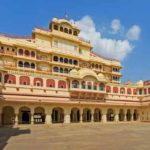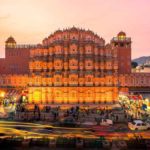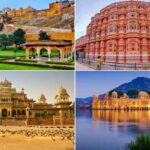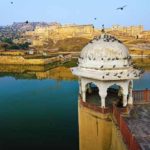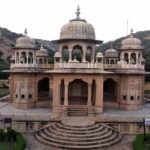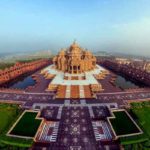Jaipur Tourist Destination
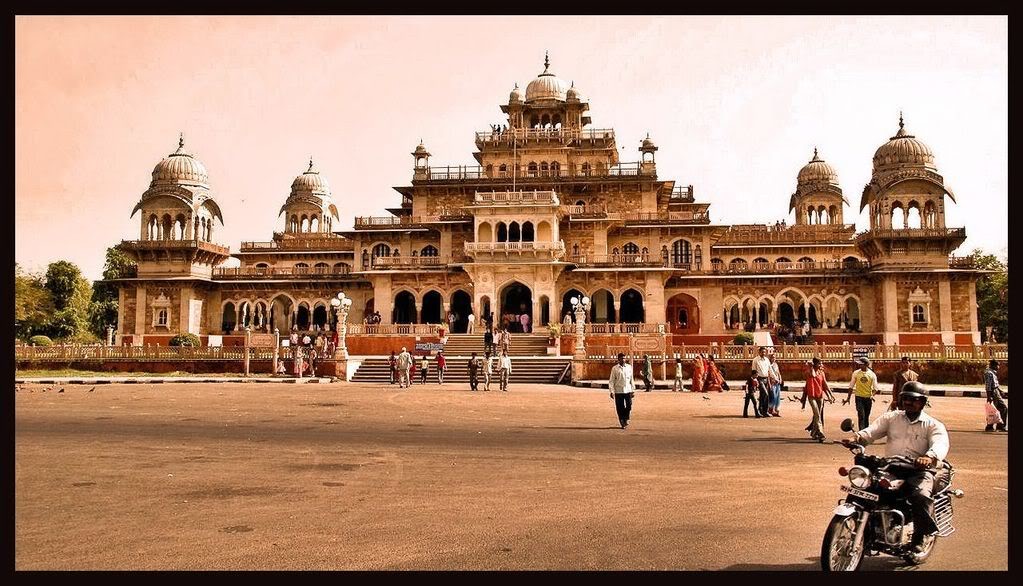
Jaipur is the capital of India’s Rajasthan state. Maharaja Sawai Jai Singh II is known to have founded the city of Jaipur on 18th November 1727.
Jaipur is touted as the first planned city of India. It was planned by a Bengali architect named Vidhyadhar Bhattacharya by following the principles of Shilpa Shastra (the science of Indian architecture).
Vedic planning for the comfort and prosperity of the citizens, or better known as Vastu Shastra, has also been incorporated in the planning.
This largest city is Rajasthan is also famous as the “Pink City”. It is so because in 1876, the city was painted with terracotta pink colour in grand welcome of the Prince of Wales. Since then the name has not only stuck, but has given the city a unique identity.
Jaipur has become a major tourist attraction among both national and international tourists. This royal city captivates travelers as it is known for its rich culture and tradition, magnificent art and artifacts, and brilliant past. The serene temples, the long standing forts and palaces, and beautiful havelis with royal touch to them; add on to the glory of Jaipur. Wonderful landscapes, marvelous flora and fauna, picturesque views; all together create a mesmerizing view of this place. Only forts and monuments aren’t the attractions of this pink city, the intricate handicraft items and exquisite jewellery also catch the eyeballs of tourists
Ranthambhore Tourist Destination
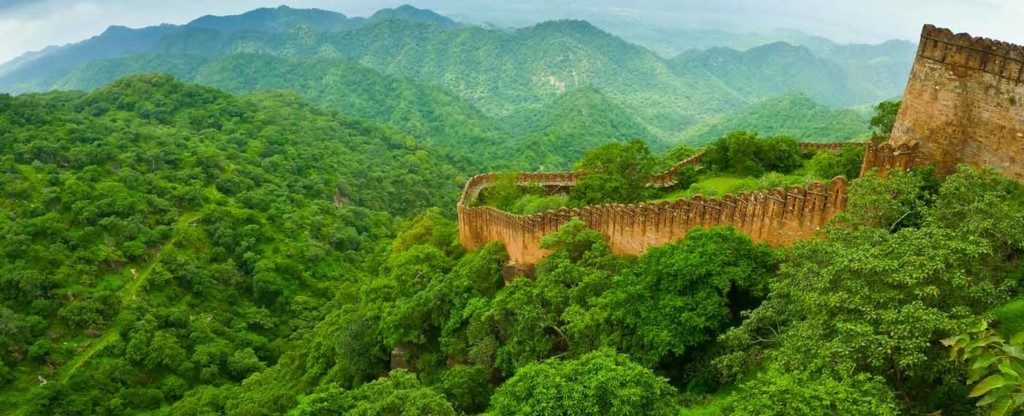
Its earlier name was Ranastambha or Ranastambhapura.
Ranthambore Fort-is one of the six forts included in the World Heritage Site from Rajasthan. Situated within Ranthambore Tiger Reserve, the fort is known for the glory and valor of Hammir Dev of the Chauhan dynasty. The fortress of Ranthambore founded in 944 is considered second largest fort in Rajasthan after Chittorgarh. Raja Sajraj Veer Singh Nagil (880 to 935 AD) was the first ruler of Ranthambore who developed and raised infrastructure to make this area suitable for defence. After the defeat of the Chauhan king Prithviraj Chauhan by Muhammad of Ghori in 1192, Ranthambore, led by Govinda Raja, son of Prithviraj, became the center of Chauhan resistance to the expanding Sultanate of Delhi. The fortress passed to the Kachwaha Maharajas of Jaipur in the 17th century, and it remained part of Jaipur state until Indian Independence.
Inside Ranthambore fort there are three Hindu temples dedicated to Ganesh, Shiva and Ramlala ji constructed in 12th and 13th centuries from red Karauli stone. There is also a Jain temple of Lord Sumatinath (5th Jain Tirthankar) and Lord Sambhavnath.
Ranthambore National Park: – Ranthambore Tiger Reserve is the single largest expanse of dry deciduous Anogeissus pendula Forest left intact in India. It is is home to over 40 species of mammals, 320 species of birds, over 40 species of reptiles and over 300 species of plants. Currently it is home to 45 adult tigers & 16 cubs.
Situated in the desert state of Rajasthan, Ranthambore’s flagship species is Panthera Tigris Tigris- the Indian or the Bengal tiger. The forest remains dry for more than eight months in a year & therefore the chances of spotting this elusive big cat are much higher as compared to other tiger reserves in India.
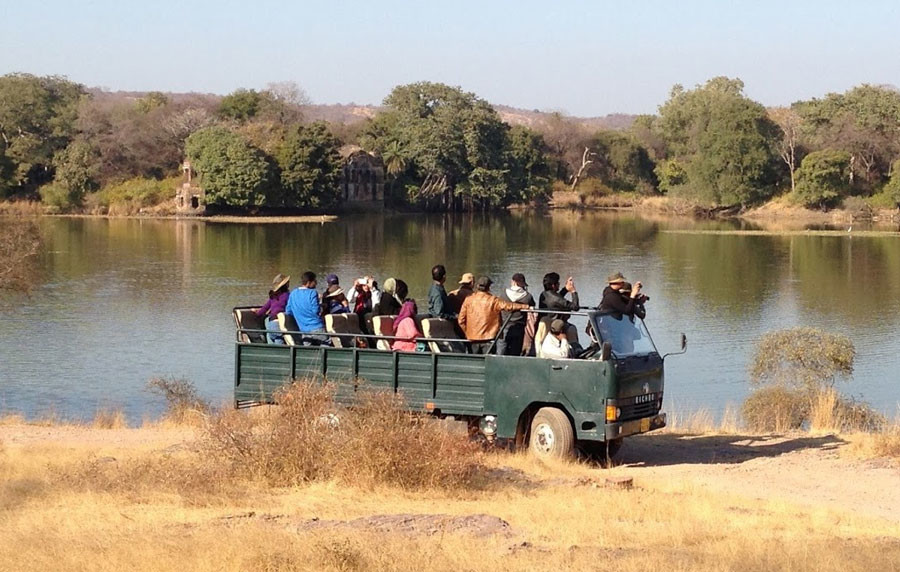
Ranthambore Tiger Reserve was previously private & exclusive hunting reserve of Jaipur royal family until 1955 when the forest was declared ‘Sawai Madhopur Sanctuary’. The practice of issuance of game permit finally came to an end in 1973 when this sanctuary was declared a part of project tiger, resulting in relocation of 12 villages located inside the park. . In 1980, in order to give greater protection to the forests, an area of 282.03 sq. k.m. of the inner part of Sawai Madhopur sanctuary was declared as national park. Since then the state Government stopped collection of any forest produce from sanctuary and national parks. In the year 1983, 647 square k.m. of forests lying to the North of the National park were declared as the Kaila Devi Sanctuary and included in the Tiger Project. Similarly, in 1984, 130 square k.m. of forests lying to the South of the Ranthambore National Park were declared as Sawai Mansingh Sanctuary and included in Tiger Project. Today, this Project tiger reserve spans over 1334 sq. km of area, of which 282 sq. km is the Ranthambore National Park.
Bikaner Tourist Destination
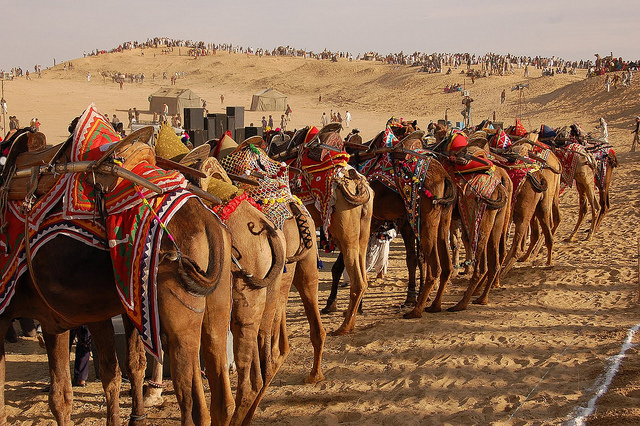
The history of Bikaner dates back to the late 15th century when enraged and provoked by his father, Rao Bikaji quit the palace in Marwar and established the kingdom of Bikaner in the midst of the desert surroundings. This city lies on the northern point on the triangle of desert cities. The prince fortified his kingdom in the year 1488. Since then, the city and the region has grown to be one of the reputed and richest kingdoms in the state of Rajasthan.
The magnificent forts and palaces, created with delicacy in reddish-pink sandstone, bear testimony to its rich historical and architectural legacy. Surging lanes and colorful bazaars with bright and cheerful folks make Bikaner an interesting destination to explore.
Bikaner is famous for its savory Bikaneri Bhujia as it is for its sweets. It is also known for its handicrafts, leather articles and for having the biggest camel farm of Asia. The city is known for its intricately carved jharokas. These stone screens are found on the windows of forts and havelis. Traditionally, women would use the screens to watch the world while remaining hidden. The red sandstone for these stone window screens is supplied by the nearby village of Dulmera. The 600-year-old Karni Mata Temple is famous for its resident population of rats which are venerated in the temple.
Bikaner is also a center for Usta art. The work for the prosperity of Usta art is being done in Bikaner for centuries. Usta art is characterized by miniature paintings and gold embossing done on ceilings, pillars, walls, marble, wooden and glass wares and ivory. But its real beauty and charm can be seen on the pieces of camel hide. The products of Usta art have been the acquaintance of Bikaner for centuries
Jodhpur Tourist Destination
Jodhpur “The Sun City” was founded by Rao Jodha, a chief of the Rathore clan, in 1459. It is named after him only. Jodhpur in Rajasthan, India was previously known as Marwar. Jodhpur is the second largest city in Rajasthan. It is divided into two parts – the old city and the new city. The old city is separated by a10 km long wall surrounding it. Also it has eight Gates leading out of it. The new city is outside the walled city.
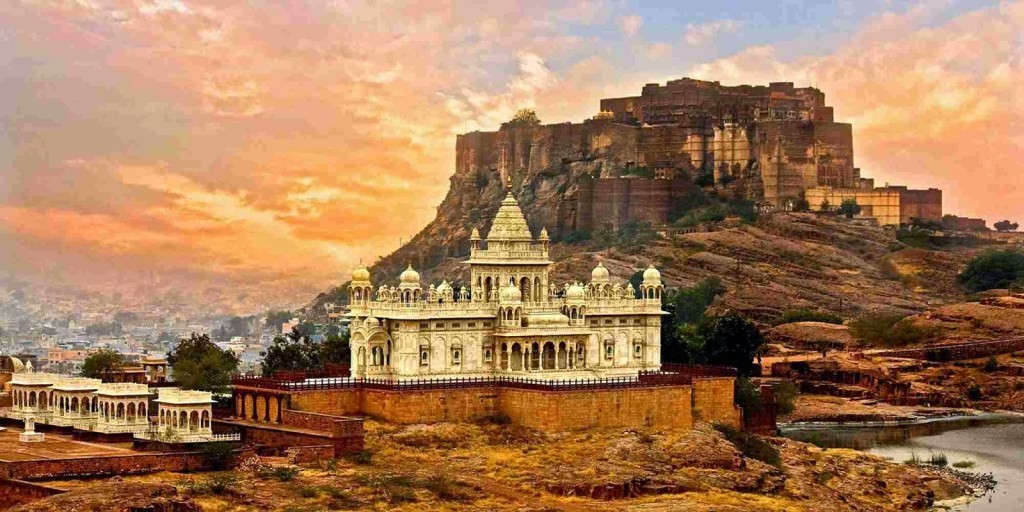
Surrounded by a huge fortress wall with bastions, the striking blue buildings in Jodhpur contrast sharply and beautifully with the neighboring Thar Desert. Exploring the palaces, forts and temples will keep you busy and in a way of the city’s historic grandeur. Bazaars offer a range of beautiful textiles, embroidered leather goods, lacquer ware, antiques, carpets, puppets and figurines. Jodhpur is a popular tourist destination and a convenient base for travel in the region.
Jodhpur is a very popular tourist destination. The landscape is scenic and mesmerizing. Jodhpur city has many beautiful palaces and forts such as Mehrangarh Fort, Jaswant Thada, Umaid Bhavan Palace and Rai ka Bag Palace. Other charms of Jodhpur include Government museum and it’s beautiful Umed garden. The city is known as the “Sun City” because of its bright and sunny weather throughout the year.
Jaisalmer Tourist Destination
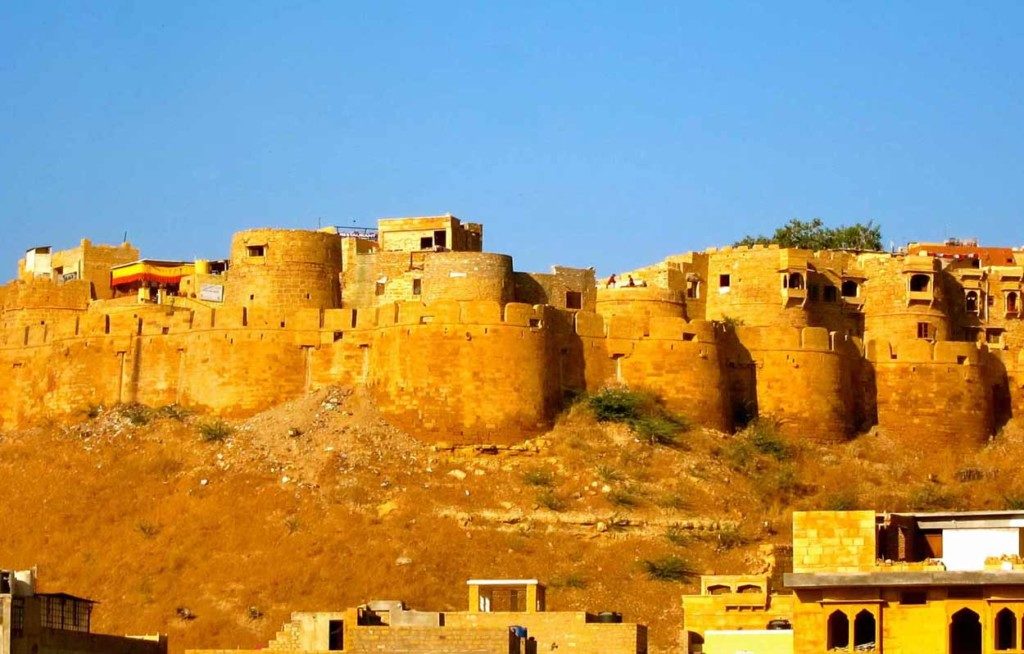
JAISALMER was founded by Maharawal Jaisal in the year 1156 AD after having shifted his capital from Ludharva (18 Kms away from Jaisalmer) to a safer place. Once a sleepy desert city, Jaisalmer has transformed itself into a major tourist destination of India. Situated amid picturesque Thar Desert, the Jaisalmer city commands premiere position among the tourist attractions scattered all over the desert land of Rajasthan. The Jaisalmer city is revered both by Indians as well as foreign tourists.
The dramatic and romantic desert fortress of Jaisalmer is an exotic city in Rajasthan’s great Thar Desert. “The Golden City” rose to prominence as a result of its position on camel trade routes. It’s now most famous for the 12th-century fort and ornate “Havelis,” fine merchant-built houses and pavilions in the city’s mediaeval lanes. The surrounding Desert National Park offers opportunities to observe blackbucks, desert foxes and chinkaras amid the rolling dunes, rugged crags and waterholes.
Like various other cities of Rajasthan, you will discover different facts of Jaisalmer as you explore this wonderful city with us. Tough there are historical monuments scattered all over the city but the Jaisalmer Fort will immediately command your attention. Made of sand stones and locally known as Sonar Quila, the Jaisalmer Fort is a dominating structure amidst sands. The Jaisalmer city is also known for its old mansions, better known as Havelis. Among many of them you will find Salim ji ki haveli and Nathmal ji ki haveli as the most striking. There are other monuments too, which are equally important because of their distinct and individual architecture. The amalgamation of ancient and the medieval era architecture will catch your fancy. The Jaisalmer city is a prominent educational as well as cultural hub in the region and regularly showcases the vivid cultural aspects of Rajasthan. Among others, it includes folk dances as well as semi classical and folk music.
Ajmer Tourist Destination
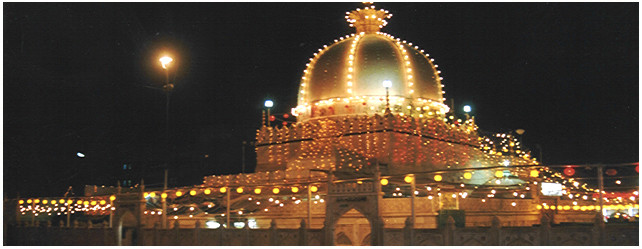
Located in the heart of Rajasthan Ajmer is a small town with a very interesting past and in today’s world growing facets of growth and development in aspects of Culture, Education, state and privately owned Industrial & infrastructure establishments coalesce towards the fascination for trade tourism and investments in the district.
In a picturesque valley surrounded by the hills of the Aravali range, 132 Kms. west of current state capital – Jaipur lies the historic city of Ajmer- a green oasis, wrapped by barren hills founded by Raja Ajay Pal Chauhan in 7th century A.D.. Ajmer got its name from name from ‘Ajay Meru’ or the invincible hill. Here he built India’s first hill fort, Taragarh. It continued to be the power center of the Chauhan clan till the end of the 12th century, Through times of War and peace. Through serenity and sacrifice.
Today hundreds of years later Ajmer is a popular pilgrimage center for the Hindus as well as the Muslims. As the final resting place of the great Sufi Saint Khwaja Moinuddin Hasan Chisti. Muslims from all over the world revere the Dargah Sharif, where the saint lies buried and locally equally revered by both the Hindus and the Muslims.
Ajmer is a perfect place that can be symbolized for demonstration of Indian culture, ethics and display of perfect blend of wide plethora of diverse religion, community, culture, linguistics etc. all coexisting and flourishing in peace and harmony. Besides local Hindus and Muslims several communities like Gujarati, Marathi, Malyali and other south Indian Communities, Sikh, Catholics, Parsi etc. Historically Ajmer being a centrally administrated state.
Pushkar Tourist Destination
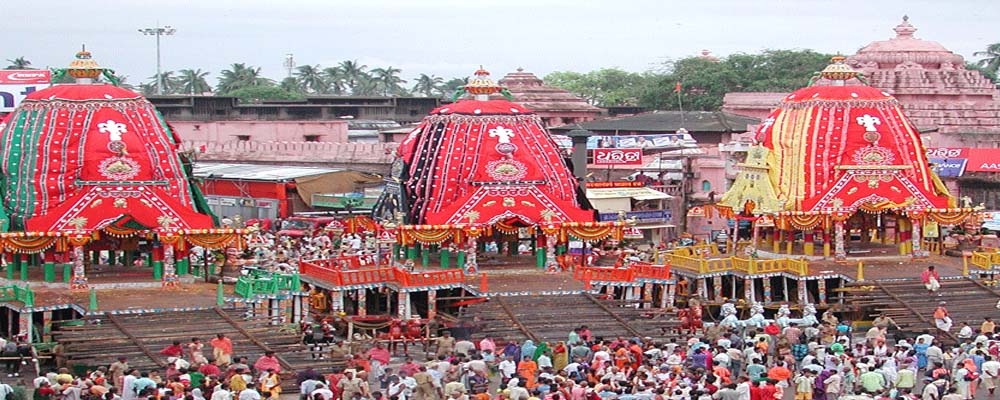
Pushkar is a town in the Ajmer district in the Indian state of Rajasthan. It is situated 14 km (8.7 mi) northwest of Ajmer at an average elevation of 510 m (1,670 ft) and is one of the five sacred dhams (pilgrimage site) for devout Hindus. Pushkar is surrounded by hillocks on three sides. The ‘Nag Pahar’, literally meaning Snake Mountain forms a natural border between Ajmer and Pushkar. Known as ‘the rose garden of Rajasthan’, the essence of the famous Pushkar rose is exported all over the world. Along with an interesting mythological history, a legacy of timeless architectural heritage makes Pushkar a fascinating city.
According to legends, Lord Brahma, believed to be the creator of the Universe dropped a lotus to the ground leading to the immediate creation of a lake. He then decided to name the place after the flower, and thus the name, Pushkar. The city of Pushkar is home to the only temple dedicated to Lord Brahma in the whole world. Hindus consider a journey to Pushkar to be the ultimate pilgrimage that must be undertaken to attain salvation.
Pushkar is a town bordering the Thar Desert, in the northeastern Indian state of Rajasthan. It’s set on Pushkar Lake, a sacred Hindu site with 52 ghats (stone staircases) where pilgrims bathe. The town has hundreds of temples, including 14th-century Jagatpita Brahma Mandir, dedicated to the god of creation, which has a distinctive red spire and walls inlaid with pilgrims’ silver coins.
Pushkar a small city situated in the states of Rajasthan India is famous for its Brahma Temples and the world’s most interesting Cattle fair which is named as Pushkar Cattle fair.
Pushkar fair is one of the world’s largest livestock and camel fairs every year Pushkar fair continues for five days and these five days are a period of relaxation and merry-making for the villagers.
This fair time is the most busy time for them, as this is one of the largest cattle fairs in the country. Animals, including over 50,000 camels, are brought from miles around to be traded and sold. Trading is brisk as several thousand heads of cattle exchange hands. All the camels are cleaned, washed, adorned, some are interestingly shorn to form patterns, and special stalls are set up selling finery and jewellery for the camels. Camels at the Pushkar fair are decorated with great care.
Udaipur Tourist Destination
Udaipur was founded in 1559 by Maharana Udai Singh II as a new capital of the Mewar kingdom. It is located in the fertile, circular Girwa Valley to the southwest of Nagda, which was the first capital of Mewar. Until Udaipur was built, the capital of Mewar was Ahar, a flourishing trade town.
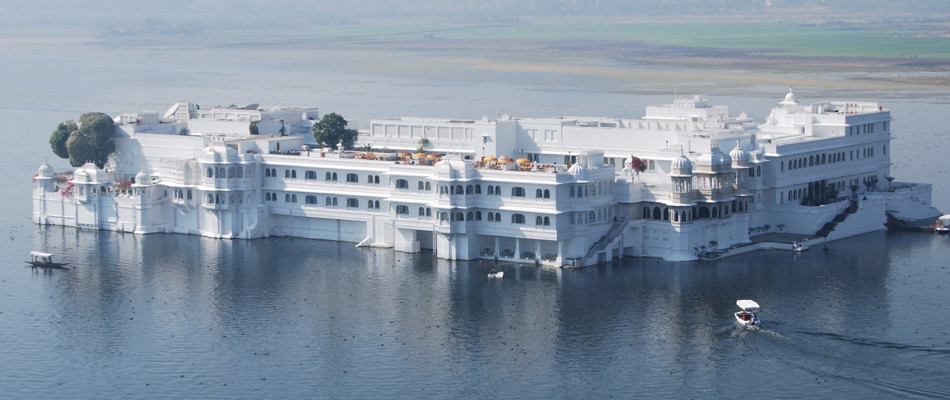
Udaipur, known as the Venice of the East, boasts several sparkling lakes against a backdrop of the Aravail hills. Jag Niwas and Jag Mandir, islands in Fateh Sagar Lake, are the site of Udaipur Solar Observatory and Nehru Garden. Famous palaces include the magical Lake Palace, now a luxurious five-star hotel, and the massive City Palace on Pichola’s east bank, featuring epic courtyards and stunning paintings.
Though termed as the city of lakes, Udaipur has many more attractions that catch the attention of the tourists with their charm. The city boasts of various museums, palaces, gardens, monuments and colourful festivals that allure tourists to visit the city for once. The lakes acting as oasis under the scorching sun propels a sense of calm along with reminding you at once of the city of Venice. The festivals, altogether colourful and lively, with their frenzies and huge scope cast a spell worthy enough to keep you too in spirit for days to come whereas the serene gardens, which lend the city its second adoptive name- The Garden City of Rajasthan, are an epitome of how the natural order manages to make its way to flourish even in the desert, uninhibited. Last but not the least, anyone even a little interested in digging in the past too is fed by through artefacts and what not that still survives in the heart of the city through museums. Udaipur is a city that has almost every type of place to make it a perfect destination for a vacation. A trip to the famous Lake Palace, Jag Niwas Palace, Lake Pichola, Museums and Gardens of Udaipur.
Chittorgarh Tourist Destination
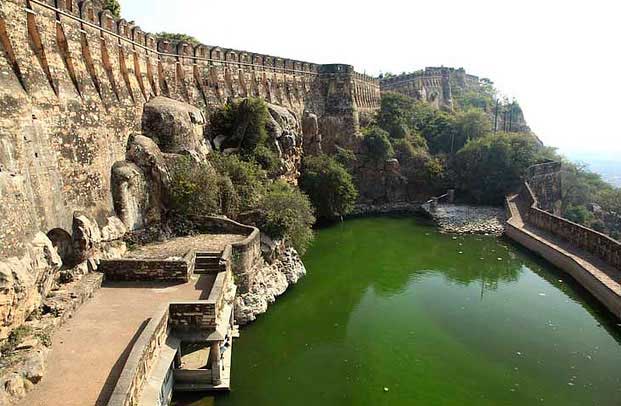
Chittorgarh is the epitome of Chattari Rajput (a Hindu Kshatriya (Warrior) caste) pride, romance and spirit, for people of Chittor always chose death before surrendering against anyone.The History of this town is written in blood and sacrifice. It is a Symbol of all that was brave true and noble in the glorious Rajput Tradition.The antiquity of chittorgarh is difficult to trace, but it’s believed that Bhim the legendary figure of the Mahabharata, visited this place to learn the secrets of immortality and became the disciple of a sage, but his impatience to perform all the rites deprived him of his goal, and out of sheer anger he stamped on the ground creating a water reservoir, this reservoir is called as BhimLat.Later on, it came under Mauryas or Muri Rajputs, there are different opinions as to when it came under the Mewar ruler, but it remained the capital of Mewar till 1568, when it was shifted to Udaipur. It’s believed that Bappa Rawal the legendary founder of Sisodia clan, received Chittorgarh in the middle of 8th century, as a part of the dowry after marriage with lst Solanki princess, after that his descendants ruled Mewar which stretched from Gujrat to Ajmer, upto the 16th century.
You can hotfoot it to the lovely palace of the brave Rana Kumbha. The majestic Vijaya Stambh, an insignia of valor and glory, the olympian Kirti Stambh, the palace of the famed Rani Padmini, the shrine dedicated to Meera Bai, the ardent worshipper of the Blue God Krishna. Besides these, you could visit the temple of Kalika Mata, the Government Museum, Mohar Magri, Tulja Bhawani shrine, Singar Chauri, Nagri, Bassi, Mati Kundiya shrine among a host of others. The vibrant Chittorgarh, emanating an old-world charm, also houses several wildlife parks. You can troop to the verdant Bhainsroragrh Wildlife park and the sanctuary of Sitamata, located in Dhariyavad.
Bundi Tourist Destination
South-east Region of Rajasthan is known as Hadoti, – the land of the Hadas. Hada Rajputs are a major branch of the Chauhan Agnikula (fire dynasty) Rajputs. They had settled in the hilly terrain of Mewar, at Bambaoda, near Bijolian in the 12C. Bundi was conquered in 1241 by Rao Deva Singh from the Meena tribe. The most impressive Taragarh Fort is the prime attraction in the city of Bundi. This fort was constructed in the 14th century.
The Bundi Palace is another place of attraction, located in close proximity to the Taragarh Fort. One will see some exquisite murals that typify the glorious era of Indian royalty.
Bundi is also famous for its large number of age old step-wells (locally called baoris). The step-wells that have been maintained till today are the Nagar Sagar Kund, Raniji ki Baori, and Nawal Sagar.
One of the prominent tourist attractions is a temple of Lord Varuna (God of Rains), half submerged in the water of the Nawal Sagar lake. The visitors, who want to see that temple, must go by boat.
Mount Abu Tourist Destination
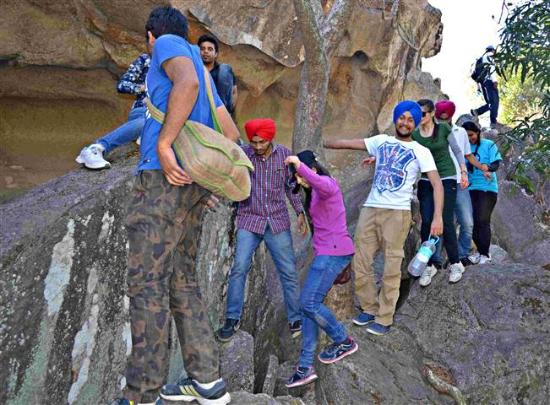
Mount Abu is as diverse as the city itself. It was once a part of the Chauhan kingdom of Rajasthan and served as a summer resort for the Rajput kings of the region. The conquest of Mount Abu in 1311 by Rao Lumba of Deora-Chauhan dynasty brought to an end the reign of the Parmars and also marked the decline of Mount Abu.
Out in the parched desert of Rajasthan, Mount Abu, a surprising mountain retreat, will take you high above the heat wave – where the air is cool and the weather is pleasant. On a drive through the desert, you’ll suddenly find the sands give way to verdant mountains, the beautiful Nakki Lake fringed with lovely trees, cool breeze, and heavenly environs.
There are many other things about this quaint and only hill station in Rajasthan. Apart from the famous Jain Delwara Temples with their intricately carved facades, the town has ancient Gaumukh Temple and the beautiful Nakki Lake. Listen to locals reciting fables of ancient Indian sages at the Gaumukh Temple and Adhar Devi Temple. Enjoy endless hours deciphering stories of Jainism that are carved intricately on the walls of the Delwara Temples.
In addition to the temples, the hill station has its own set of peaceful places where you can spend time at. A walk through the Peace Park, which is impeccably maintained by a charitable organization, will cool you off. Enjoy picturesque views from the Sunset Point as well as the Honeymoon Point.

